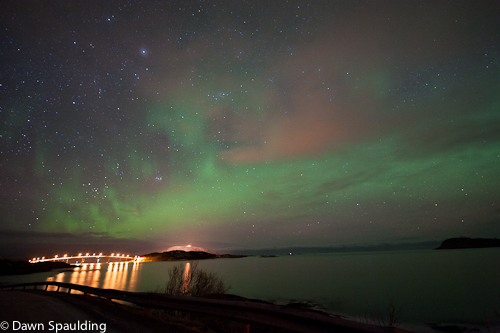
This winter was the peak of the 11-year solar cycle, the period during which the sun produces sunspots and solar storms, resulting in high auroral activity. Since there’s nowhere better to view the aurora borealis than Lapland, my husband and I stocked up on extreme cold-weather gear and headed north. Way north.
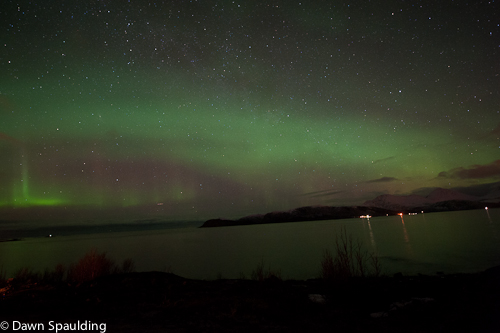

We were prepared for sub-zero temperatures and were pleasantly surprised at finding temps more in the twenties and thirties Farenheit, no colder than typical winter weather to which we’re accustomed. The trick to staying outside for extended periods of time is layers, which we piled on: long underwear, fleece-lined pants, ski pants, thin fleece tops, lightweight down jackets, windproof ski jackets.
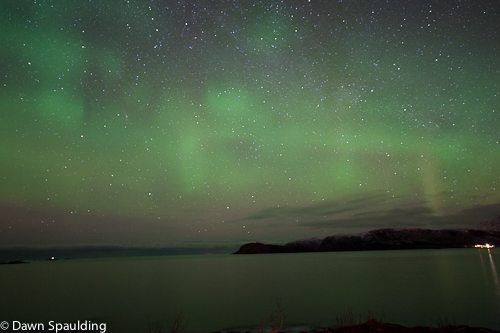
Winter is the ideal time to view the lights since it’s dark almost all day and there’s a high likelihood of clear skies. The lights can be seen in an irregularly shaped oval centered over the magnetic pole.
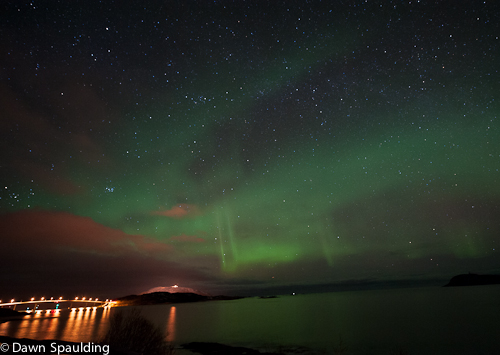
Aurora Borealis is caused by solar storms that throw fast-moving electrons and protons from the sun in a twisting mass of electric and magnetic fields. The particles take about 40 hours to travel from the sun to the earth. When the highly charged particles reach the earth, they follow the lines of magnetic force generated by the earth’s core and flow through the magnetosphere.
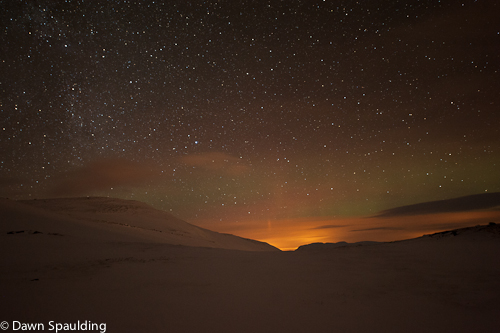
When the electrons enter the earth’s upper atmosphere, they encounter atoms of oxygen and nitrogen 20-200 miles above the earth’s surface. Depending on which gas particles collide, different colors are produced. The most common auroral color, a pale yellowish-green, is produced by oxygen molecules located about 60 miles above the earth. Rare, all-red auroras are produced by high-altitude oxygen, at heights of up to 200 miles. Nitrogen produces blue or purplish-red aurora.
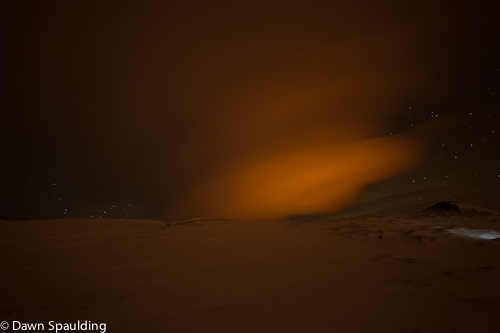
The magnetic and electrical forces react with one another in constantly shifting combinations, so the aurora appears to dance across the sky.
Though none of the nights were cloud-free, we were able to get a few glimpses of the lights in between moments of coverage.
One Response to Aurora Borealis, or Northern Lights